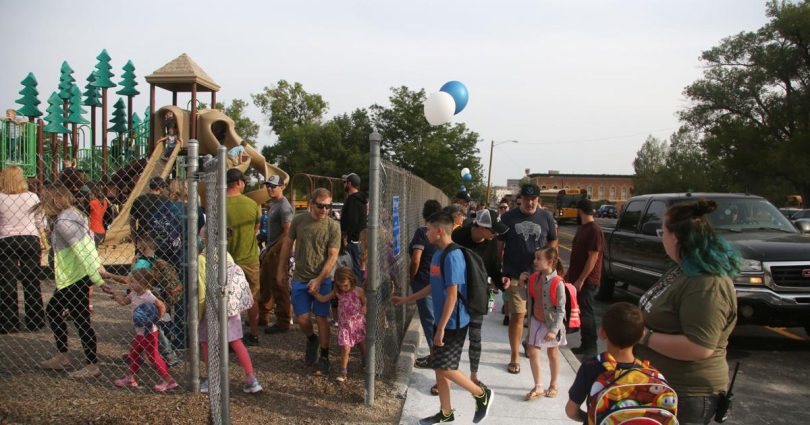[ad_1]
Lawmakers are considering the potential cost-saving benefits of installing solar panels on school buildings as the state looks to more stable sources of long-term funding for public education.
Back in April, Matthew Willmar, a school finance analyst with the Legislative Service Office, estimated that the state would face a roughly $193 million structural shortfall in education funding. To put that into context, the state needs about $1.98 billion to fund K-12 education for the next two years, an amount that doesn’t include funding contributions from local school districts. But since then, revenue for education has actually been higher than projections. Minerals are doing well. Property tax revenues are up. Wyoming is pretty flush with money right now. But those sources of revenue aren’t always dependable over the long-haul.
People are also reading…
“In the big picture of the Wyoming world, we do have a structural deficit,” Revenue Committee Chairman Sen. Cale Case, R-Lander, told the Star-Tribune. “We keep being bailed out, and we never get our budget to be really sustainable.”
During the 2020 school year, Wyoming public schools spent more than $37 million on utilities, according to the Wyoming Department of Education. Several people from the public proposed installing solar panels as a measure to cut down those costs. That option is particularly relevant now given new incentives on the horizon under the federal Inflation Reduction Act, which President Joe Biden signed into law last month. Under the act, schools could get a direct payment from the federal government that would cover up to 30% of installation costs. Before, incentives for installing solar panels were limited to tax credits, which allows people to get some money back on their tax returns. But since public buildings — like those that house public schools — are paid for with government money, they didn’t benefit from the tax credit incentives.
Installing solar panels on school buildings doesn’t necessarily have to be something that goes through the Legislature; it could be a school-by-school decision. But the Legislature could potentially pass a bill that would appropriate some amount of money or create a low or zero-interest loan program to kickstart solar installation on school buildings, since 70% of the cost of installation would still have to be covered, Shannon Anderson, Powder River Basin Resource Council staff attorney, told the Star-Tribune. (Michele Irwin, an organizer with the Powder River Basin Resource Council, advocated for installing solar panels on school buildings at a Joint Revenue Committee meeting last week).
Although Case said he thinks considering solar panels is a good idea, he’s also concerned that large-scale adoption of solar power could hike up utility costs for other people. But Irwin said that a study the council had undertaken shows that hasn’t been the case so far.
“From a residential perspective, at least, there is no burden,” she said. “If we look at this, especially with the IRA money, these could actually be a benefit to communities,” Irwin told the committee. (Anderson told the Star-Tribune later, however, that installing panels on public buildings may have a different impact).
The idea is still tentative at this point. Sen. Stephan Pappas, R-Cheyenne, said he wants to get more data and understand “what the revenue picture would be, what the savings would be versus the cost of putting them in, what our return on investment would be” before moving forward with anything.
“I think if we’re looking at raising revenue, we need to see those kinds of numbers,” he said.
The Joint Revenue Committee will meet next in November to look at those numbers.
[ad_2]
Source link








